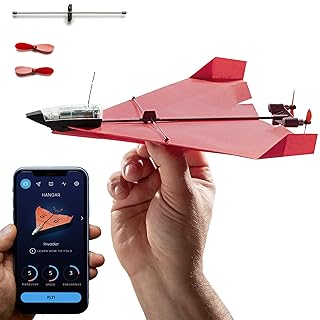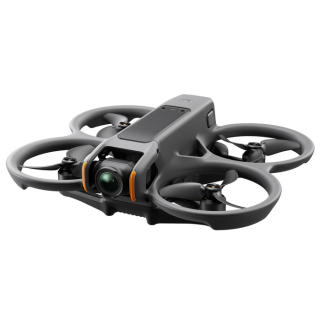
 How to use flight mode / How to use trim and global variables
How to use flight mode / How to use trim and global variables
This section explains how to use the flight mode of OpenTX / EdgeTX radio and how to set trim and global variables.
What is flight mode?
FLIGHT MODES is a function to switch trim and global variable settings together. You can prepare multiple sets of trim and global variable settings and switch between them during flight using a switch e.t.c.. Trim switching is mainly used for radio controlled gliders. Global variables can be used anywhere on MODEL settings screen. By switching this, you can change the flight characteristics and so on.You can set 9 sets of flight modes from FM0 to FM8 for each MODEL.
The flight mode peculiar to FPV drone (Angle / Horizon / Acro / Air) is different from the flight mode described here. See below for details.
What is trim?
Trim is a function that adjusts the center position of gimbal. There is one trim for rudder, elevator, throttle and aileron, and you can change this to temporarily shift the center position.There is one set of trim settings for each MODEL, and individual values are stored for each of the nine flight modes.
For more information, see How to use trim switches .
What are global variables?
Global variables (GVARS) are variables that can be used around MODEL settings screen. For many items such as curve parameters where you can enter numbers on the settings screen, you can specify global variables instead of numbers. Normally, pressing and holding [ENTER] key while editing a number switches to selecting a global variable.For example, if you specify the same global variable for multiple items, you can change these values at once later. You can also use SPECIAL FUNCTIONS to change the value of global variables while maneuvering using switches e.t.c.. This is useful when you want to make fine adjustments to setting parameters while maneuvering.
Nine global variables, G1 to G9, can be used for each MODEL, and individual values can be set for each of the nine flight modes.
Flight mode setting
 When you open "FLIGHT MODES" screen from "MODEL menu", it looks like this.
A list of 9 flight modes from FM0 to FM8 is displayed.
When you open "FLIGHT MODES" screen from "MODEL menu", it looks like this.
A list of 9 flight modes from FM0 to FM8 is displayed.
The meaning of each field is as shown in the table below, starting from the left.
 In color display / touch panel model, when you open "FLIGHT MODES" screen, it will look like this.
Flight mode names and triggers are listed.
Tap each to open the detailed settings screen.
In color display / touch panel model, when you open "FLIGHT MODES" screen, it will look like this.
Flight mode names and triggers are listed.
Tap each to open the detailed settings screen.
| field | description |
|---|---|
| 1 | Flight mode number. Currently enabled flight modes are shown in bold. |
| 2 | The name of the flight mode. You can give it any name you like. Enter on the detailed setting screen. |
| 3 |
This is a trigger to enable this flight mode. You can specify a switch, etc.
Enter on the detailed setting screen.
Eight flight modes from FM1 to FM8 can be set to enable / disable by setting a trigger. When multiple flight modes are enabled at the same time, the flight mode defined in the upper row is used. FM0 is enabled when all eight flight modes are disabled. Flight modes other than FM0 cannot be used unless a trigger is set to enable it. In the example on the screen above, four flight modes from FM0 to FM3 can be used. |
| 4 |
The status of the trim set for this flight mode. From left to right, the trim status of R, E, T, and A is shown.
Enter on the detailed setting screen.
The value of each trim is not displayed directly here. Trim can be displayed / changed on the main screen after enabling any flight mode. The meanings of the characters displayed here are as follows. The number following ":(colon)" indicates that another flight mode trim will be used. For example, if ":0" is displayed, it means that the trim value set on the main screen when FM0 is enabled will be used. ":0" on FM0 line means that FM0 itself has its own trim value. The number following "+(plus)" indicates that this flight mode trim will be added to the flight mode trim specified by the number. You can set the trim relative to the trim value for another flight mode. For example, "+2" indicates that the trim value set in this flight mode will be added to the trim value set in FM2. "--" indicates that the trim setting is disabled in this flight mode. If you operate this trim switch on the main screen, nothing happens. |
| 5 |
The last column shows Fade In / Fade Out (discussed below) setting status, superimposed on the trim status.
Enter on the detailed setting screen.
"I" indicates that Fade In is set for this flight mode trim. "O" indicates that Fade Out is set for this flight mode trim. "*" Indicates that both Fade In and Fade Out are set for this flight mode trim. |
 On the flight mode list screen, select any flight mode and press [ENTER] key to display the detailed setting screen.
On the flight mode list screen, select any flight mode and press [ENTER] key to display the detailed setting screen.
The meaning of each field is as shown in the table below.
 You can set color display / touch panel model in the same way.
However, the Trims field has a separate screen. If you select "Setup" button...
You can set color display / touch panel model in the same way.
However, the Trims field has a separate screen. If you select "Setup" button...
 Displays the trim state set for this flight mode.
Selecting a trim switch name (eg "Rud") will enable/disable the trim.
Selecting the drop-down list to the right of the trim switch name allows you to specify the trim status shown in the table below.
Displays the trim state set for this flight mode.
Selecting a trim switch name (eg "Rud") will enable/disable the trim.
Selecting the drop-down list to the right of the trim switch name allows you to specify the trim status shown in the table below.
| item | description |
|---|---|
| Mode name | You can name this flight mode. Enter up to 6 alphanumers, spaces, and hyphens. |
| Switch | Specifies the switch to enable this flight mode. If nothing is specified here, this flight mode will be disabled. |
| Trims | Specifies the trim status used in this flight mode. Specify one of ":0" ~ ":8", "+1" ~ "+8", "--" in the order of R, E, T, A from the left. |
| Fade in | Gradually change the value when this flight mode is enabled. Specify the time in "seconds" until the value change is completed. You can specify a range from 0.0 seconds to 25.0 seconds. |
| Fade out | Gradually change the value when this flight mode is disabled. Specify the time in "seconds" until the value change is completed. You can specify a range from 0.0 seconds to 25.0 seconds. |
| Global variables | Set global variables. See Setting Global Variables for more information. |
 To check the effect of Fade in / Fade out, use "CHANNELS (MIXERS) MONITOR" (Output Monitor) screen on main screen.
If you switch to the flight mode with Fade in / Fade out specified on this screen, you can see how the output value of the channel gradually changes according to the setting.
To check the effect of Fade in / Fade out, use "CHANNELS (MIXERS) MONITOR" (Output Monitor) screen on main screen.
If you switch to the flight mode with Fade in / Fade out specified on this screen, you can see how the output value of the channel gradually changes according to the setting.
 On Input Monitor screen of main screen, even if you switch to the flight mode with Fade in / Fade out specified, the graphic display of the trim will switch instantly.
So the effect of Fade in / Fade out cannot be confirmed.
On Input Monitor screen of main screen, even if you switch to the flight mode with Fade in / Fade out specified, the graphic display of the trim will switch instantly.
So the effect of Fade in / Fade out cannot be confirmed.
Set trim for each flight mode
 Use main screen to set the trim for each flight mode.
When you operate switch that triggers flight mode, the name of the currently enabled flight mode (“Level 1” in this figure) is displayed to the right of battery level display on main screen.
And around the screen, trim value set in that flight mode is displayed graphically.
In the example on this screen, throttle trim is set to disabled ("--"), so that setting is not displayed.
Use main screen to set the trim for each flight mode.
When you operate switch that triggers flight mode, the name of the currently enabled flight mode (“Level 1” in this figure) is displayed to the right of battery level display on main screen.
And around the screen, trim value set in that flight mode is displayed graphically.
In the example on this screen, throttle trim is set to disabled ("--"), so that setting is not displayed.
If you operate the trim switch in this state, the trim setting will be stored in the selected flight mode. And the next time you select this flight mode, the trim settings will be restored.
 For color display / touch panel model, the name of the currently enabled flight mode is displayed at the bottom center of the screen.
This display can also be hidden.
For color display / touch panel model, the name of the currently enabled flight mode is displayed at the bottom center of the screen.
This display can also be hidden.
 At the bottom of the flight mode setting screen, there is a line that says "Check FMn trims".
"FMn" part is currently enabled flight mode number.
Select this line and pressing [ENTER] temporarily disables the current flight mode trim settings in channel output.
Used to check effect of trim settings.
At the bottom of the flight mode setting screen, there is a line that says "Check FMn trims".
"FMn" part is currently enabled flight mode number.
Select this line and pressing [ENTER] temporarily disables the current flight mode trim settings in channel output.
Used to check effect of trim settings.
Setting Global Variables
 Global variable setting screen is located at the second half of the detailed flight mode setting screen.
9 global variables G1 to G9 can be set to different values for each flight mode.
Global variable setting screen is located at the second half of the detailed flight mode setting screen.
9 global variables G1 to G9 can be set to different values for each flight mode.
The meaning of each field is as shown in the table below.
 In color display / touch panel model, global variable settings has a separate screen.
Value of the global variable (FM0 column) and source flight mode (FM1 to FM8 columns) in each flight mode are displayed.
In color display / touch panel model, global variable settings has a separate screen.
Value of the global variable (FM0 column) and source flight mode (FM1 to FM8 columns) in each flight mode are displayed.
If you select any global variable on this screen, you can select [Edit] or [Clear].
| field | description |
|---|---|
| 1 | Number of the global variable. |
| 2 | Name of the global variable. You can give it any name you like. Enter on the detailed setting screen. |
| 3 |
Status of this global variable.
You can edit the value directly on this screen.
When "Own" is displayed, it means that the current flight mode has its own value. When "FMn" is displayed, it means that the setting value of the flight mode number is diverted. Global variables of FM0 always have their own values. You can only switch to "Own". Global variables of other flight mode numbers can be diverted from other flight modes. |
| 4 | Current value of this global variable. You can edit the value directly on this screen. |
 On global variable list screen, select any global variable number (G1 to G9) and press [ENTER] key to display detailed setting screen.
On global variable list screen, select any global variable number (G1 to G9) and press [ENTER] key to display detailed setting screen.
The meaning of each field is as shown in the table below.
 You can set color display / touch panel model in the same way.
You can set color display / touch panel model in the same way.
| item | description |
|---|---|
| Name | You can name this global variable. Enter up to 3 alphanumers, spaces, and hyphens. |
| Unit | Select the unit for this global variable. You can select "-(not specified)" or "%". This is simply specify whether or not to add "%" when the value of this global variable is displayed. |
| Precision |
Select the precision of this global variable.
A selection of "0.0" allows it to have values in the range -102.4 to +102.4. A selection of "0.--" allows it to have values in the range -1024 to +1024. |
| Min / Max | You can limit the range of possible values for this global variable. You can specify a value of -102.4 to +102.4 or -1024 to +1024 or less according to "Precision" setting above. |
| Popup | If you check here, a pop-up window will be displayed on main screen when the value of this global variable changes during maneuvering. Name and new value of changed global variable are displayed. |
| FM0~FM8 |
Specifies the value of this global variable for each flight mode.
Alternatively, specify "FMn" to specify diversion from other flight mode values.
For monochrome display models, each time you press and hold [ENTER] key, you can enter a value or enter a flight mode number. About this part, no matter which flight mode number you open the detailed setting screen, same screen will be displayed if it is the same global variable. For color display models, each time switch to the right of the flight mode name is turned ON/OFF, you can enter a value or enter a flight mode number. |
Change the value of global variable during maneuvering
 On "
SPECIAL FUNCTIONS
" screen of "MODEL menu", you can make settings to change any global variable.
If you set SPECIAL FUNCTIONS with "Adjust" as the action and global variable number as the argument, you can change the value of global variable during maneuvering under various conditions.
By operating switch, you can set a specific fixed value, add or subtract a numerical value, or change the value of a global variable according to mixer value set on MIXES screen.
In the example in this figure, turning dial S2 changes the value of the global variable G2.
On "
SPECIAL FUNCTIONS
" screen of "MODEL menu", you can make settings to change any global variable.
If you set SPECIAL FUNCTIONS with "Adjust" as the action and global variable number as the argument, you can change the value of global variable during maneuvering under various conditions.
By operating switch, you can set a specific fixed value, add or subtract a numerical value, or change the value of a global variable according to mixer value set on MIXES screen.
In the example in this figure, turning dial S2 changes the value of the global variable G2.
















